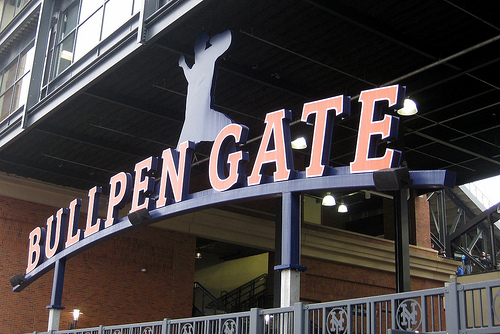
MMO Fan Shot by Gary Rubin
The fine art of closing out a baseball game so that your team wins wasn’t always valued the way it is today. In fact, saves, one of the primary statistics to measure the effectiveness of a closer, didn’t even come into existence until 1969 (though it’s been since calculated retroactively), a beyond special year in Met lore to say the least. And that is where we will start, also given that there wasn’t much closing going on prior to that. The Mets never finished higher than 9th out of 10th in the pre-expansion and pre-playoff format that existed for many, many years, which included a 154 game season.
Given that this concept of “saving” was still being refined on a sport-wide basis, Johnny Murphy, the Mets GM at the time who was soon to pass away of a heart attack, made sure that the great Gil Hodges had not one but two potential closers, one from the right side and one from the left. You will surely remember the southpaw, none other than the very celebrated Tug McGraw, he of “Ya Gotta Believe” fame, who had 12 saves that season, at a very young age. Taking into account there were “co-closers”, that was a respectable number.
Now, unless you are close to 60, or an absolute Met fanatic, you may not not remember the name of the righty, who had 13 saves. But Ron Taylor, who the great Lindsey Nelson used to refer to as Dr. Ron Taylor, as he reportedly had some type of medical degree, closed with acumen from the right side. This combo, with occasional help from none other than Nolan Ryan (yes), amply handled the closing that year. Incidentally, closers weren’t used as frequently at the time, because starters often went nine innings if pitching well. A different ballgame entirely!
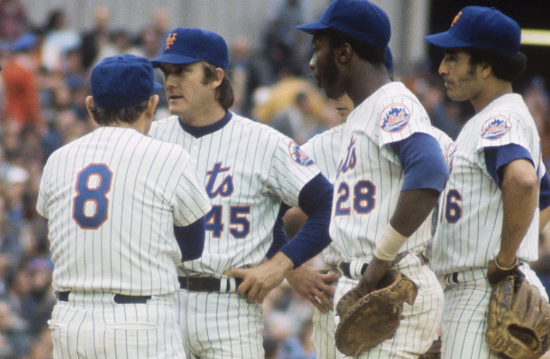
Taylor and McGraw were there together again in 1970, but afterward, McGraw was to take over the duties on a solo basis (including his aforementioned 1973 stint), and did so until 1975, when he was traded. It was then that a gentleman named Skip Lockwood took over the closing duties through 1979, and even though the boys in orange and blue didn’t win a lot of games during that period, Lockwood was pretty competent and reliable.
In 1980, the Mets had two closing options again, though one was traded infamously shortly thereafter, only to become one of the better closers in baseball history, Jeff Reardon.
But Neil Allen, who would become a crucial piece of Met history, in that he was soon to be traded for none other than one Mr. Keith Hernandez, handled the duties aptly from 1980-1982. This was to be the first of several great trades by the Mets’ greatest GM, Frank Cashen, and of course set the table for the organization’s great run in the 80’s. Allen never did much for the Cards, his new home.
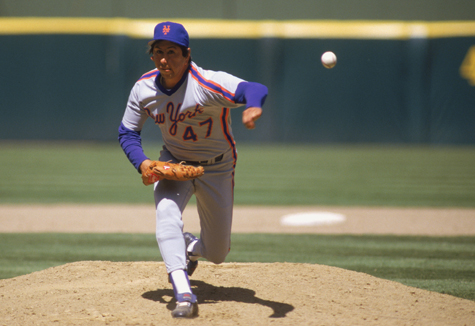
When the Mets traded the last of their superior 1970’s pitchers, Jerry Koosman, they didn’t appear to get much back or so it seemed. Though it would take several years, a lefty minor leaguer named Jesse Orosco would take hold of the closing duties in 1983 very successfully, and while partly sharing duties with Roger McDowell for several years, Orosco was the Mets’ primary end-game reliever through 1987, when he was traded.
Still with the help of McDowell, a younger lefty, Randy Myers, handled the job aptly for two years, helping the 1988 Mets almost win the NL pennant again.
Myers was traded before the 1990 season for someone who would hold down the job for almost ten years. Southpaw John Franco had the perfect personality for NY as he was from Brooklyn, and although he would sometimes frustrate, he very much got the job done. When Franco finally hung up his cleats, he racked up a record 276 saves for the Mets.
GM Steve Phillips decided he needed a power arm for the slot, something Franco was not, especially as he was getting up in years. Moving to a setup role, Phillips brought in someone who, although he would have as many as 43 saves through 2003, didn’t always come through in the clutch, particularly in the 2000 World Series against none other than the NY Yankees. His name-Armando Benitez.
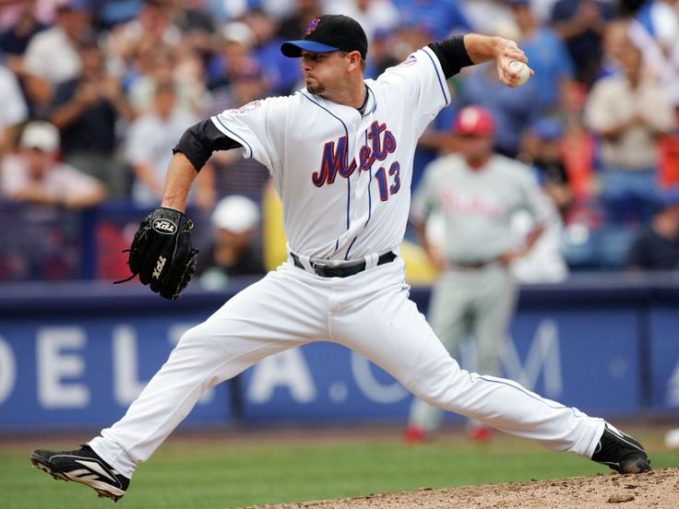
As you can kind of tell, the Mets had this role filled more or less acceptably to this point in their history. It continued, albeit with a no name, Braden Looper in 2004- 05. But when Mets GM Omar Minaya saw the team turning the corner in ‘05, he made one of his best moves, signing free agent Billy Wagner. One of the best closers in baseball history, Wagner helped lead them in their semi- successful period of 2006- 2008, with as many as 40 saves.
Once again, a free agent was called upon for 2009- not just any free agent, but someone coming off a 62 save season-still a record. Francisco Rodriguez, known in baseball purely as K-Rod, held the reigns till 2012, but an infamous clubhouse fight with his own father-in-law would get him traded. K-Rod never came close to repeating his earlier success, and these were tough years for the Mets.
Bobby Parnell was a reasonably successful bullpen piece that was called upon to close in 2013, with some good results. Unfortunately Tommy John surgery got in the way of his development in 2014 and he was unable to come back properly, as the occasional pitcher is. So another bullpen piece stepped in, only later to step out. Three times. Jenry Mejia looked like the real deal, but his three suspensions for PED’s took him out of the picture. To this day he is still fighting for a return.
Enter a familiar name, or shall I say a Familia name. Jeurys Familia had been the 8th inning setup man with success. With Mejia gone, he was called upon to close in 2015, for the most part with great results. Despite a brief mid season meltdown, Familia still managed 43 saves, and was lights out in the first two rounds of the playoffs. Not so much in the World Series. We know how that ended.
Familia had even more acumen in 2016 with 51 saves. Again though, he suffered a post season letdown. In the wild card game versus the San Francisco Giants, Madison Bumgarner and Noah Syndergaard matched zeroes through 7. First Addison Reed, and then Familia attempted to hold back the Giants, until Familia finally gave up a three run dinger. Bumgarner, in the game till the end, was brilliant, and the Mets would go no further that year. Familia was finally traded mid year 2018, only to return to extremely mediocre results in 2019, as a setup man for one Edwin Diaz.
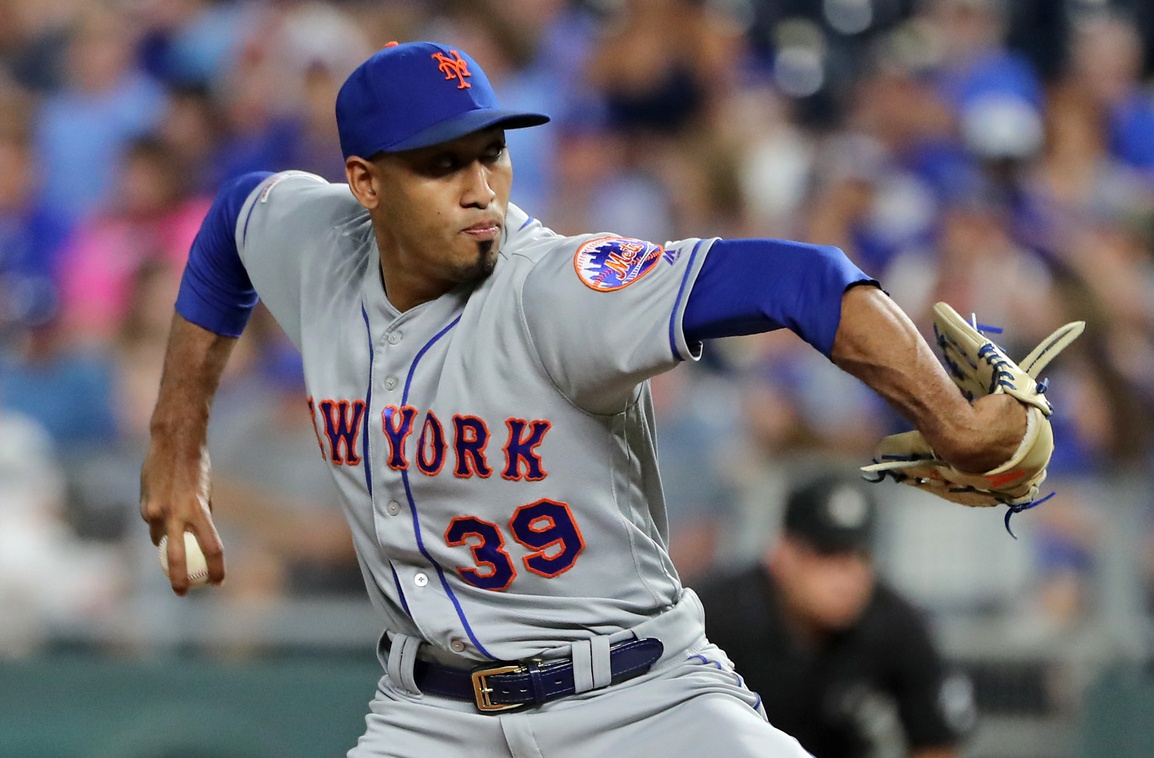
This part of of the story you surely know. Newly hired GM Brodie Van Wagenen was anxious to prove himself, and immediately made a blockbuster trade with Seattle, sending a not so relevant package west- with one exception. Jared Kellenic is currently one of the top 15 minor league prospects in baseball, and is expected to be a difference maker.
In turn, the Mets took on then 36 year old Robinson Cano’s 20 mil a year obligation, for 5 years. The saving grace of this deal was supposed to be closer Edwin Diaz, coming off a 57 save season and just 24 years old. While we still have hope for Diaz, his shockingly disappointing year in 2019 was surely one of the reasons the Mets just missed a wild card spot. He’s expected to be a big part of the 2020 bullpen. Assuming there is a season.
While the story doesn’t end perfectly, the New York Mets have had an interesting and fairly positive history at the closer position. Hopefully it continues, whenever there is baseball again.
* * * * * * *
This Fan Shot was contributed by diehard Mets fan and MMO contributor Gary Rubin.
Have something you want to say about the Mets? Share your opinions with over 25,000 Met fans who read this site daily. Send your Fan Shot to [email protected].














